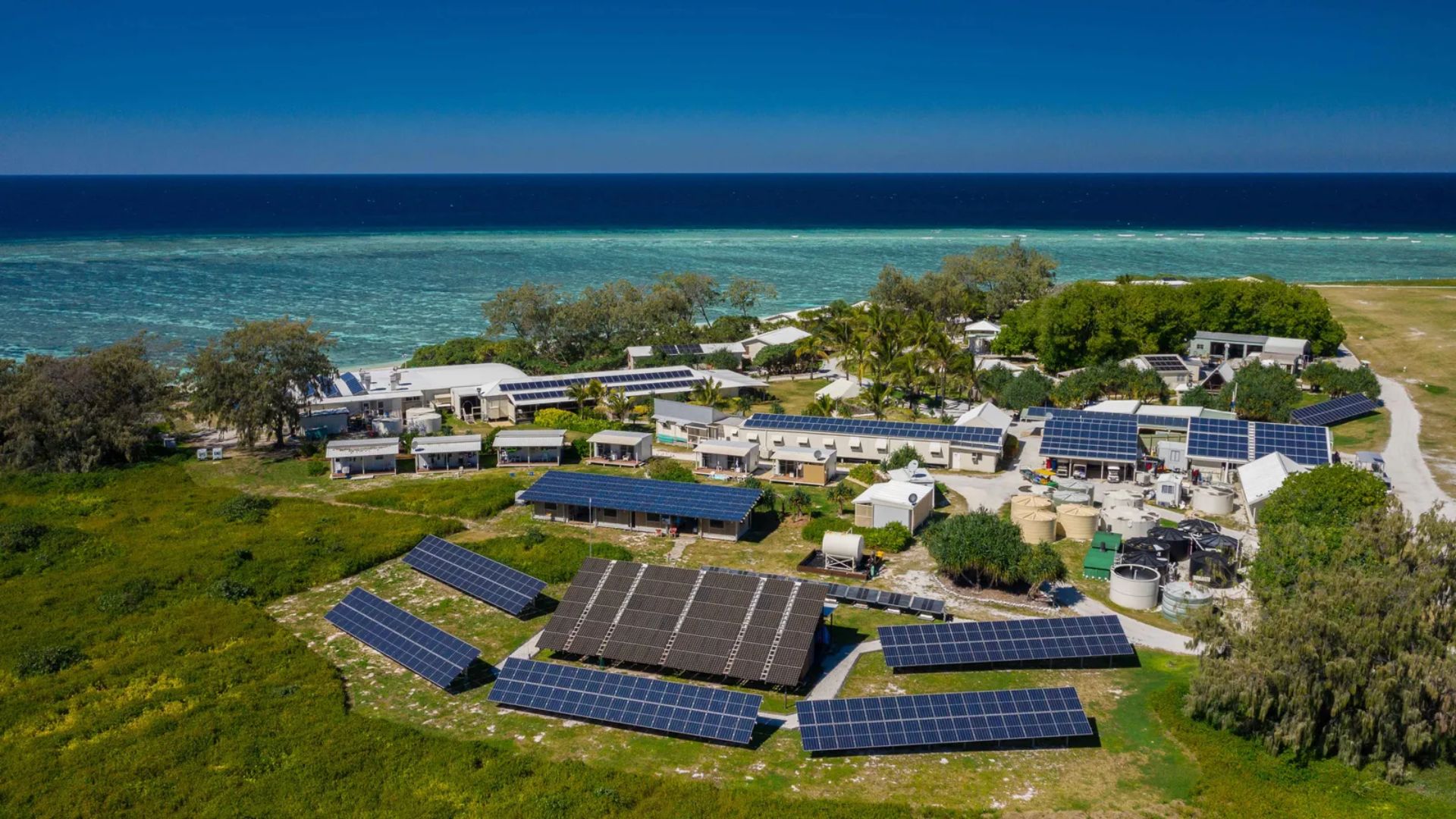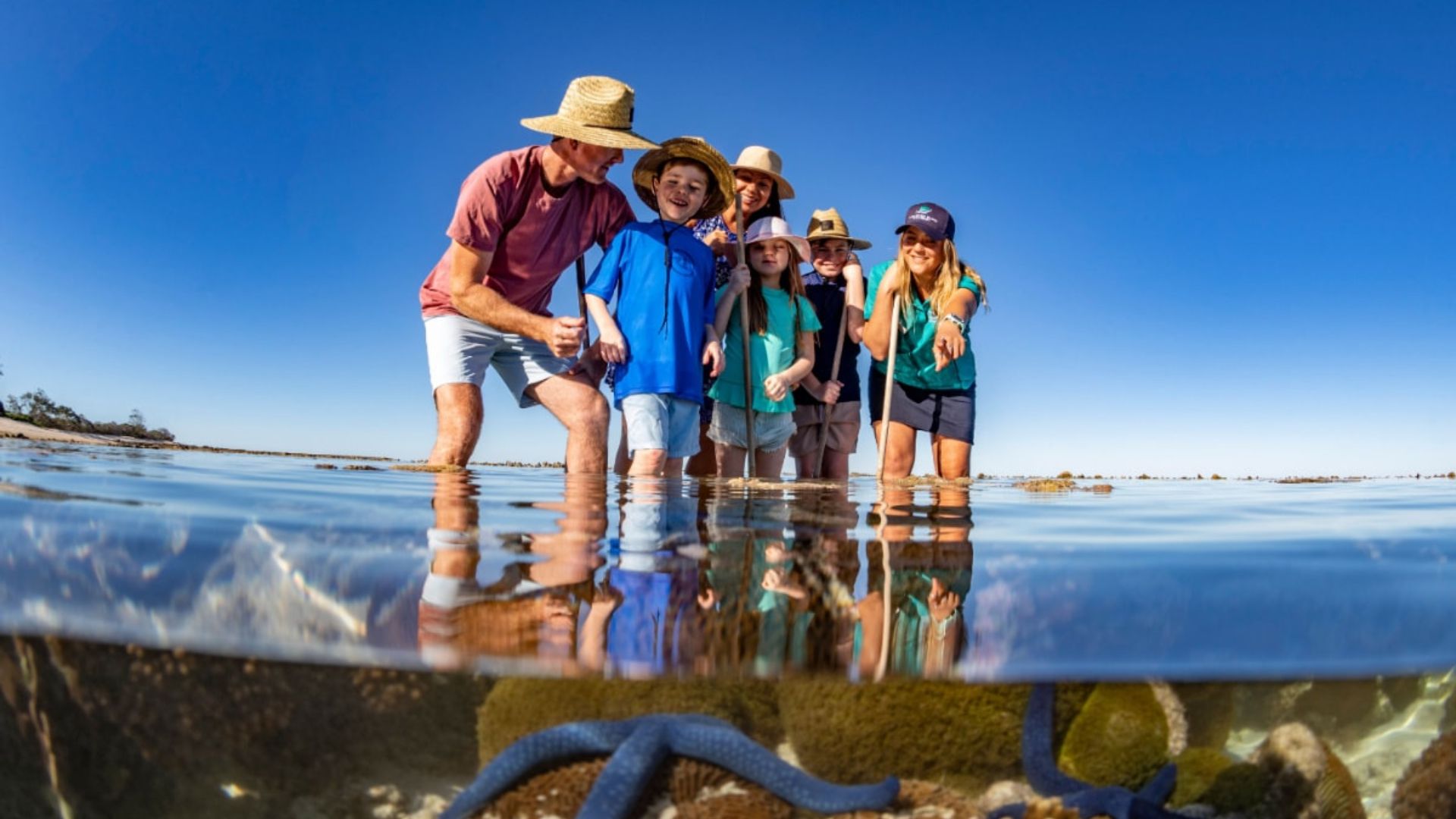Nestled like an emerald jewel at the southernmost tip of the Great Barrier Reef, Lady Elliot Island beckons with a story as captivating as its aquamarine waters and vibrant coral reefs.
Once marred by guano miners and overrun by goats, this island is now a living testament to the power of human dedication, environmental regeneration, and sustainable living.
In the late 1800s, Lady Elliot Island suffered extensive damage at the hands of guano miners who stripped it almost bare. Adding to its woes, the Queensland Government introduced goats to the island to provide food for shipwrecked sailors. These goats further prevented the island from regenerating naturally. By the mid-20th century, Lady Elliot had been reduced to little more than a barren expanse of compacted coral, a far cry from the lush paradise it is today.

The island's solar power station generates enough renewable energy to run the entire resort (Credit: Lady Elliot Island)
Lady Elliot Island's fortune changed when visionary individuals recognized its potential for restoration. One such pioneer was Don Adams, an aviator who saw an opportunity in the degraded Commonwealth Island in 1969. He established a small resort and initiated a do-it-yourself revegetation program, laying the foundation for the island's future transformation.
Another key figure in the island's resurgence was Peter Gash, who, in the 1970s, was captivated by the island's potential during a sailing trip. He obtained his pilot's license and began flying tourists from Brisbane and the Gold Coast to Lady Elliot, offering a taste of the Great Barrier Reef without the need to travel to the main reef tourism hub in Cairns. Struck by the contrast between Lady Elliot and its more vegetated neighbor, he was inspired to take action.
A Journey of Regeneration
Building on the legacy of Don Adams, Peter Gash and his team embarked on an ambitious mission. They planted over 10,000 native seedlings across the island, eradicating invasive species in the process. As a result, Lady Elliot Island underwent a remarkable transformation.
Guest cabins, once exposed to north-easterly winds, are now shielded by a vibrant wall of octopus bushes. A thriving forest of pisonia trees on the island's western side provides a sanctuary for nesting seabirds. Pandanus trees anchor dunes, creating nesting sites for green and loggerhead turtles. The team is even exploring ways to replant the island's airstrip with native grasses.
The island now boasts the second-highest diversity of bird species on the Great Barrier Reef, and this regeneration extends its positive impact to the surrounding reef. Seabird nutrients, naturally filtered by the coral cay, have a fertilizing effect on the coral, contributing to the health and vitality of the ecosystem.
A Wildlife Wonderland
Diving into the waters surrounding Lady Elliot Island reveals a world of vibrant marine life. Green turtles, parrotfish, and clownfish thrive in these protected waters, showcasing the health of the reef. However, it's the majestic manta rays that truly capture the imagination. A semi-resident manta population swells to some 700 individuals during the winter months, making this island one of the world's premier destinations for swimming with these graceful creatures.

Credit: Lady Elliot Island
Lady Elliot Island is not just a tourist destination but a place where visitors actively contribute to science and conservation efforts. Through initiatives like Project Manta in collaboration with the University of Queensland, tourists can photograph and upload images of mantas they encounter, directly impacting scientific research on the reef.
The island encourages guests to join in its commitment to sustainability. Visitors are urged to minimize electricity and water usage, respect wildlife, and reduce food waste. The resort was also the first in the Great Barrier Reef to ban single-use plastic bottles in 2012.
Peter Gash's efforts have earned recognition, and the island has drawn global conservation leaders. It was selected as the first "climate change ark" under the Great Barrier Reef Foundation's Reef Islands Initiative, highlighting its importance as a refuge for critical habitats.